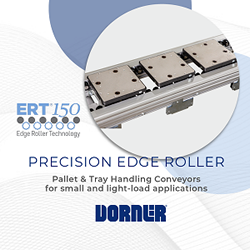Pudu Robotics Rolls Out the All-New PuduBot 2 Universal Delivery Robot
On July 18, commercial service robots producer Pudu Robotics unveiled its newest offering, the all-new PuduBot 2. Featuring a range of upgrades, this new generation of universal delivery robots offers better environment adaptability, stronger sensors, higher battery power capacity, and superior stability to the very successful first-generation PuduBot launched in 2017.
On July 18, commercial service robots producer Pudu Robotics unveiled its newest offering, the all-new PuduBot 2. Featuring a range of upgrades, this new generation of universal delivery robots offers better environment adaptability, stronger sensors, higher battery power capacity, and superior stability to the very successful first-generation PuduBot launched in 2017.
A relay of classic, the PuduBot 2 is an enhanced version of PuduBot. It is more adaptable, with a high-performance lithium iron phosphate (LFP) battery that can provide up to 24 hours of operational battery life on a three-hour charge. The battery is also safer and has a longer lifespan, making it a more sustainable and environmentally responsible option. In addition to the increased sustainability, the PuduBot 2 also comes with an upgraded industry-leading chassis system that increases driving stability by 30 percent.
The PuduBot 2 is equipped with the company's self-developed PUDU SLAM (Simultaneous Localization and Mapping) technology. It features an industry-first fusing laser and visual positioning navigation technology, as well as marker-less deployment, which cuts deployment time by 75 percent without the need to redecorate ceilings and ensures stable operation even in high-ceilinged environments of up to 20 meters. Moreover, the PuduBot 2 has dual lidar (laser imaging, detection, and range) sensors that allow it to constantly and accurately visualize its surroundings and make intuitive course adjustments.
With Pudu Robotics' self-developed PUDU OS, users can use an intuitive toolkit to design mapping paths and directions for their PuduBot 2 fleet and keep track of each robot's whereabouts at all times by using the smart-watch app. Each PuduBot 2 can communicate with not only users but also other nearby devices, automatically calibrating the best pathing for increased efficiency and flow over the shared network.
Since its inception, Pudu Robotics has been continuously optimizing its products, enriching the service space, and expanding application scenarios. The PuduBot 2, with its ability to move around smoothly and self-reliantly with great accuracy in mixed environments, a longer battery life, and a 7-layer adjustable tray design, can adapt to a variety of service or delivery tasks in industrial facilities, leisure and entertainment venues, retail stores, supermarkets and more, making it a robot that actually improves the efficiency of human production and living.
For more information, please visit www.pudurobotics.com
Featured Product

